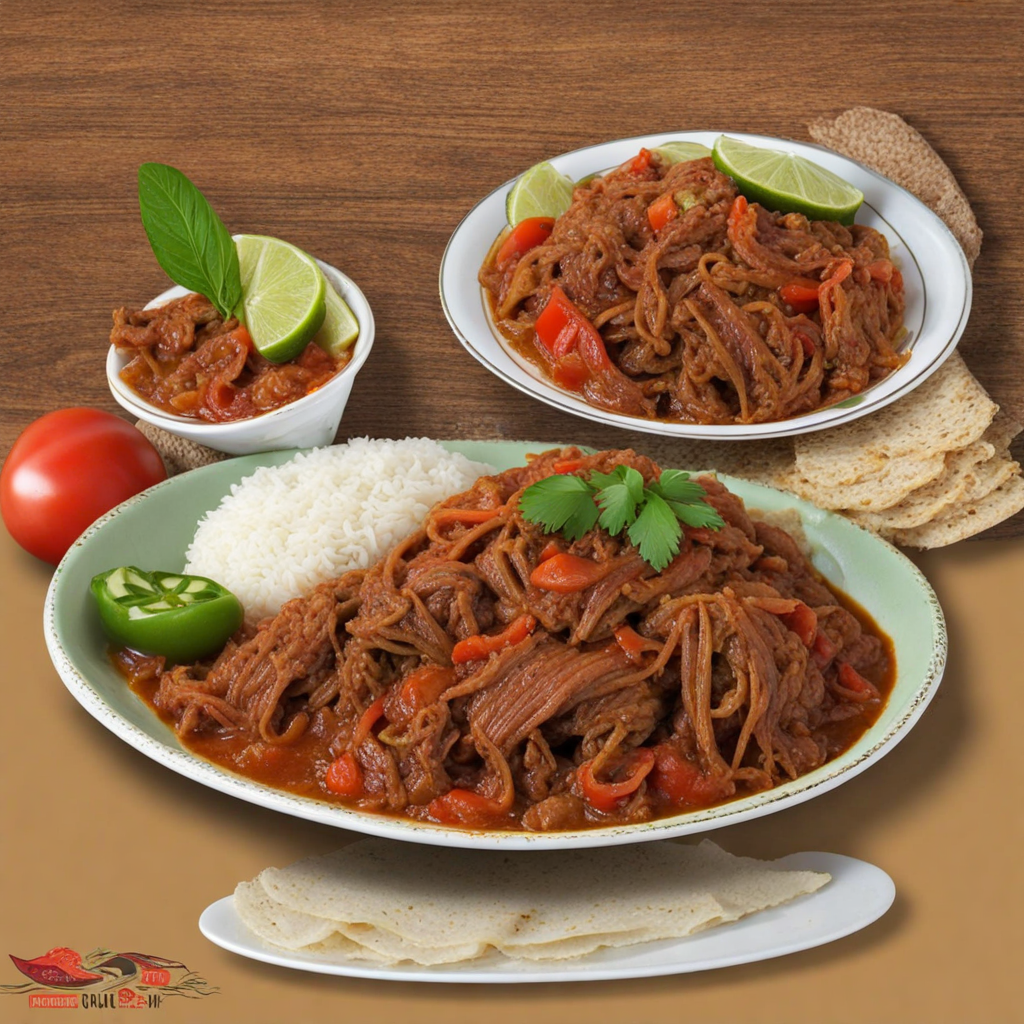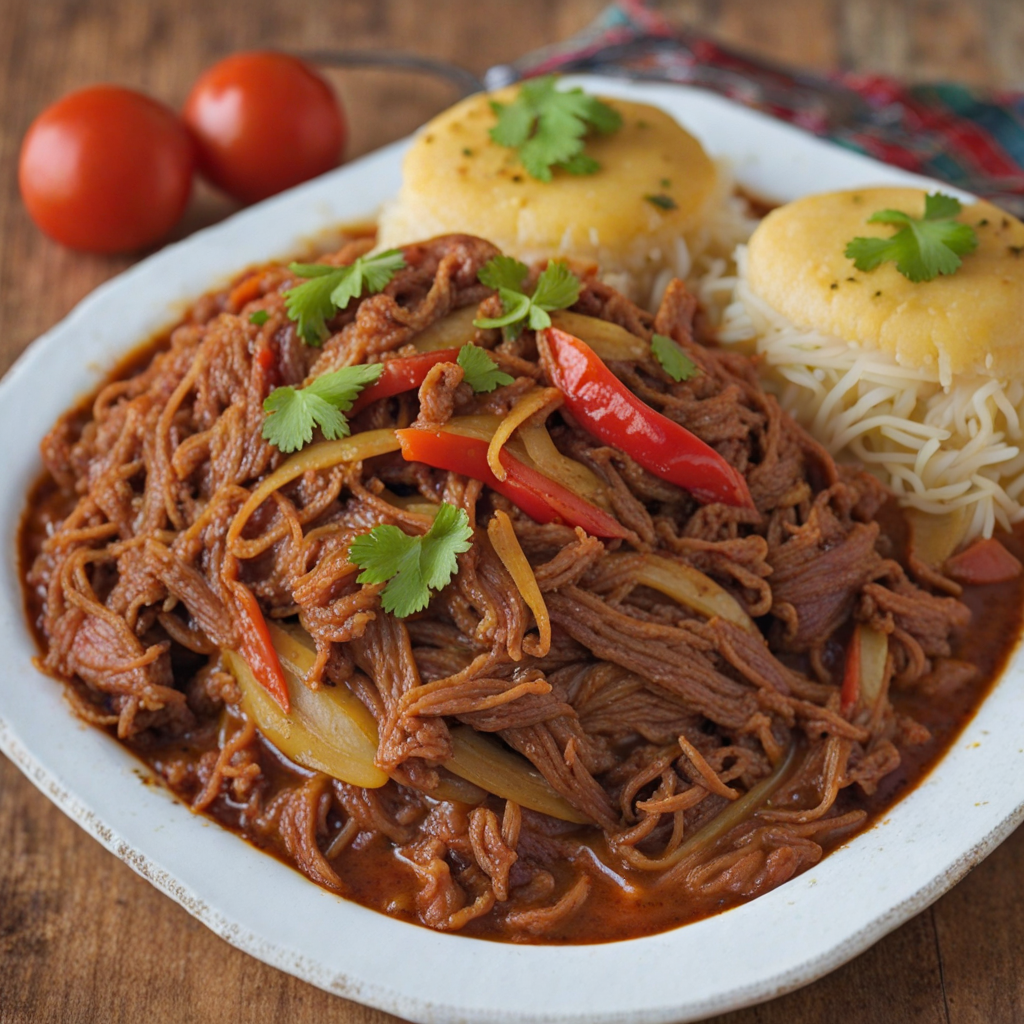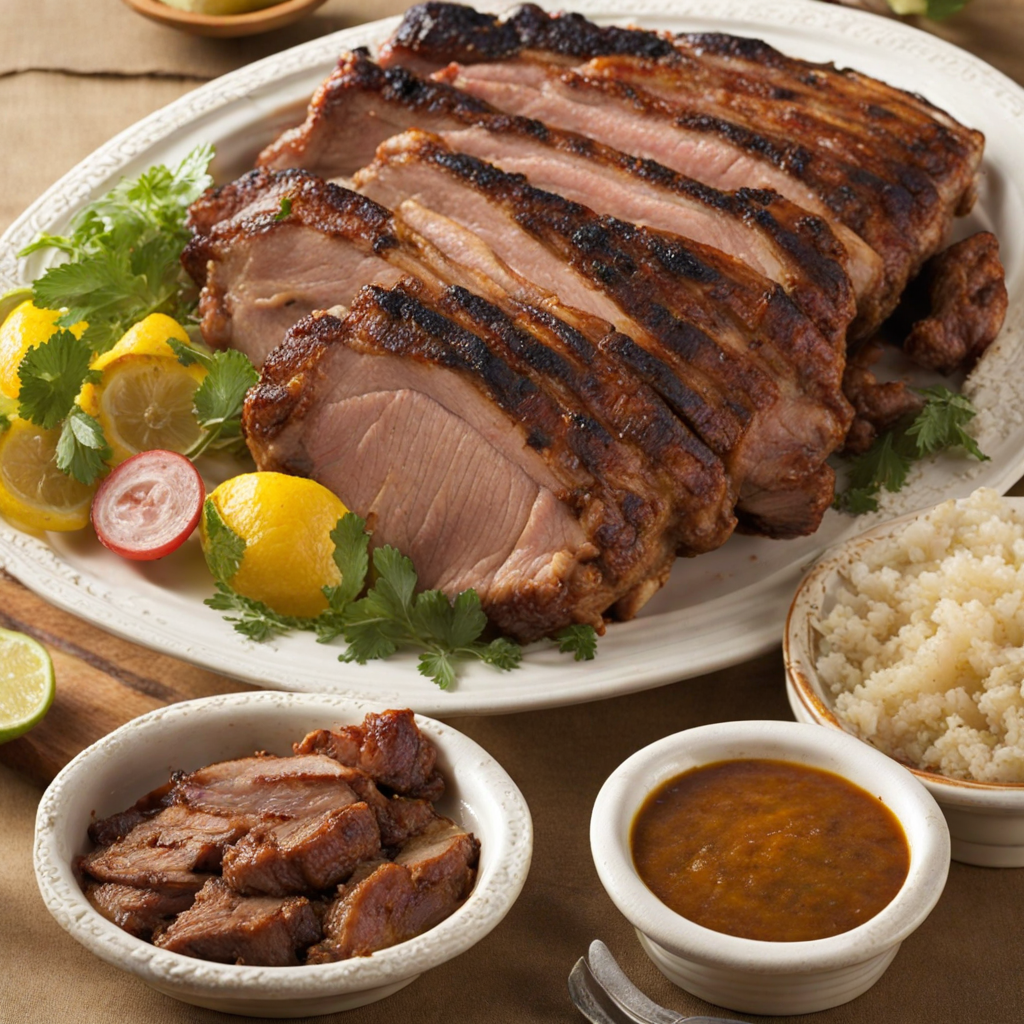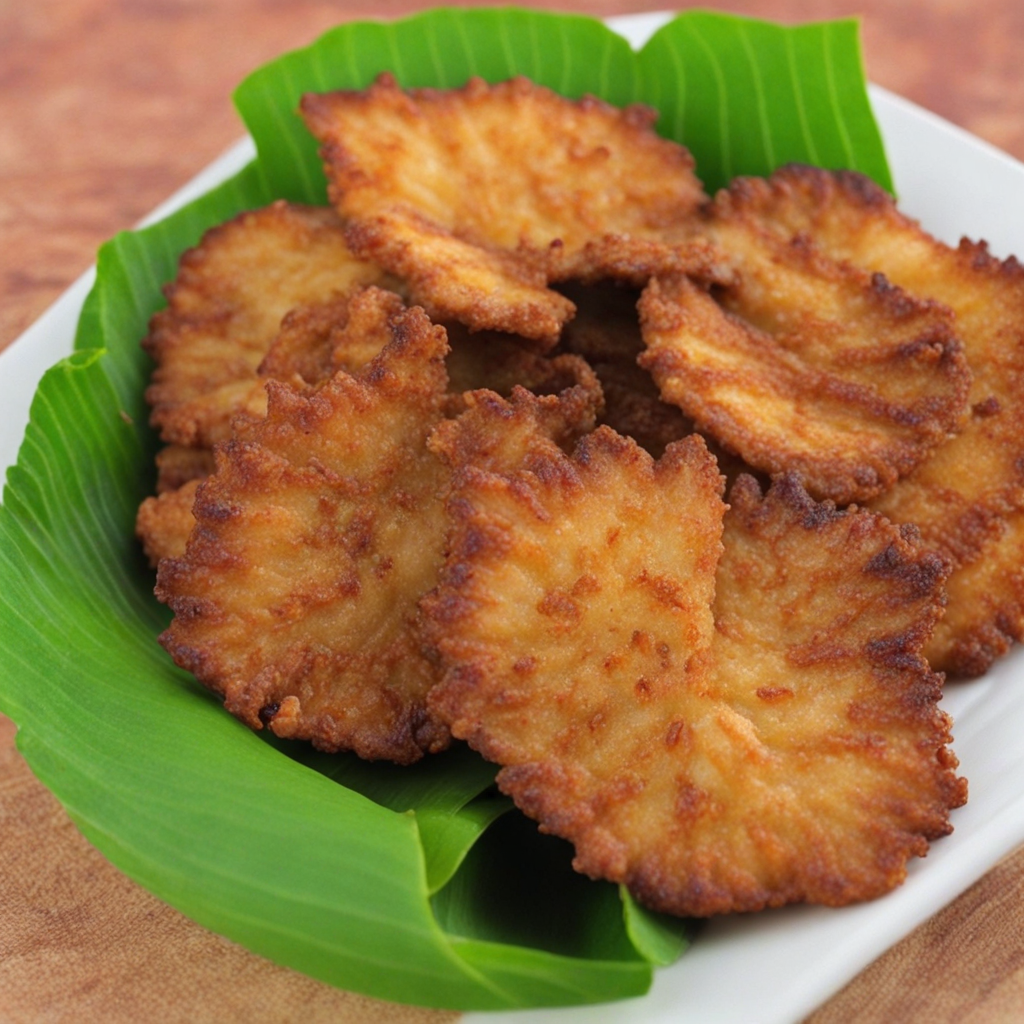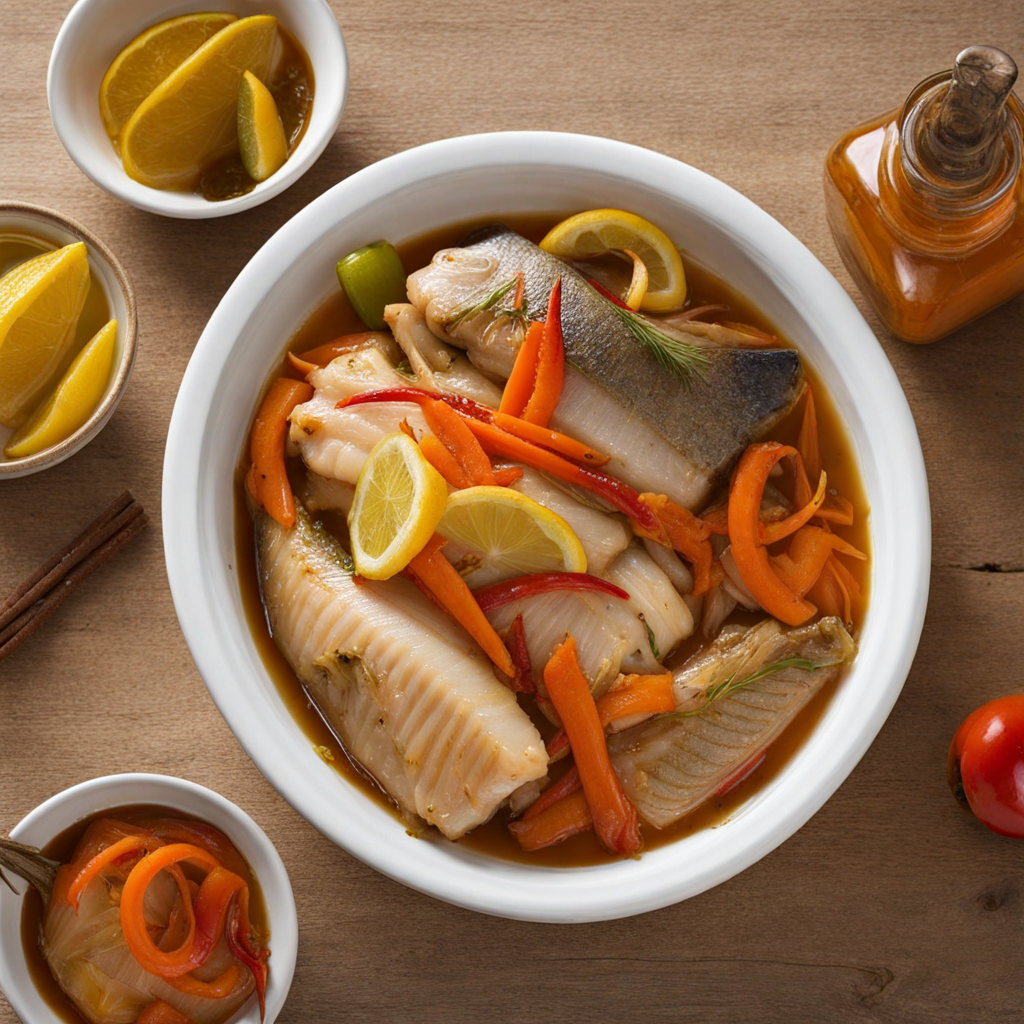Ropa Vieja
Ropa Vieja, a quintessential dish of Cuban cuisine, translates to "old clothes" in Spanish, aptly capturing the dish's appearance. This savory stew features shredded beef, slow-cooked to tender perfection in a rich tomato-based sauce infused with a medley of bell peppers, onions, and a variety of spices. The beef is typically marinated and cooked until it falls apart, allowing it to absorb the vibrant flavors of the sauce, which is often enhanced with garlic, cumin, and a hint of oregano. The result is a dish that is as comforting as it is delicious, with each bite bursting with the essence of traditional Cuban cooking. The dish is often served over a bed of fluffy white rice, which perfectly complements the rich sauce and allows the flavors to meld beautifully. Accompanying the Ropa Vieja, you might find black beans and sweet plantains, adding a touch of sweetness and a delightful contrast to the savory notes of the beef. The combination of textures—from the tender meat to the soft rice and the creamy beans—creates a well-rounded meal that is both satisfying and flavorful. Ropa Vieja is not just a meal; it is a celebration of Cuban culture and heritage. It embodies the spirit of home-cooked meals, often prepared for family gatherings and special occasions. The layers of flavor and the heartwarming aroma that waft through the kitchen evoke a sense of nostalgia and comfort, making it a beloved dish for many. Whether enjoyed at a local Cuban restaurant or made from scratch at home, Ropa Vieja offers a delightful culinary experience that invites you to savor the rich traditions of Cuba.
How It Became This Dish
Ropa Vieja: A Tapestry of History and Flavor Ropa Vieja, a quintessential dish of Cuban cuisine, is not just a meal; it is a narrative woven into the fabric of Cuba’s history, culture, and identity. Translated literally as "old clothes," Ropa Vieja refers to the shredded beef that is simmered in a richly flavored sauce, typically made with tomatoes, bell peppers, onions, and a medley of spices. This dish is emblematic of the fusion that characterizes Cuban food, drawing from its diverse influences and historical contexts. Origins: A Culinary Crossroads The roots of Ropa Vieja can be traced back to the Canary Islands, where a dish called "ropa vieja" originally referred to leftover meat. However, the dish truly flourished in Cuba during the Spanish colonial period in the 18th century. Spanish colonization brought with it an array of culinary practices, as well as the introduction of African slaves who contributed their own rich culinary traditions. The amalgamation of these cultures resulted in a vibrant food scene that would give rise to many of Cuba’s iconic dishes. The term “ropa vieja” itself was likely adopted from the Spanish dish, which consisted of meat that was cooked, cooled, and then shredded. In Cuba, as the dish evolved, it became a staple, particularly among the working class, as it was a practical way to transform tough cuts of meat into a flavorful dish. The dish's name is often attributed to the appearance of the shredded beef, resembling old, tattered clothes. However, the connotations of poverty and resourcefulness embedded in the name speak to the resilience of the Cuban people throughout their tumultuous history. Cultural Significance Ropa Vieja is more than just a dish; it is a representation of Cuban identity, a symbol of resilience, and an embodiment of the island's diverse cultural influences. The dish is often served with rice and black beans, a quintessential Cuban combination that exemplifies the practice of creating a balanced meal from available resources. This reflects the practicality that has characterized Cuban cooking throughout history, especially during times of scarcity, such as the Special Period in the 1990s, when Cuba faced severe economic challenges. In Cuban households, Ropa Vieja is frequently featured at family gatherings and celebrations, reinforcing its role as a comfort food. The preparation of the dish is often a communal activity, fostering familial bonds as generations come together in the kitchen. The flavor profile of Ropa Vieja is rich and complex, embodying the warmth of Cuban hospitality. The dish is often accompanied by plantains, yuca, or avocado, showcasing the island's agricultural bounty and the importance of local ingredients. Development Over Time As Cuba's political landscape shifted dramatically in the 20th century, so too did its culinary traditions. After the Cuban Revolution in 1959, the government instituted policies that affected food production and distribution. This led to a greater emphasis on self-sufficiency and the use of local ingredients. Ropa Vieja, being a dish that could be prepared with relatively inexpensive cuts of meat and basic pantry staples, remained a beloved comfort food in Cuban homes. The dish also became popular among the Cuban diaspora, particularly in the United States, where it was embraced by Cuban expatriates seeking to preserve their culinary heritage. In cities like Miami, Ropa Vieja became a staple in Cuban restaurants, showcasing the flavors of home for many who had left their island nation. The dish's adaptability allowed it to evolve, with variations appearing that incorporated different spices or cooking techniques, reflecting the diverse experiences of Cuban immigrants. In contemporary times, Ropa Vieja has gained recognition beyond the Cuban community, celebrated by food enthusiasts and chefs alike for its depth of flavor and cultural significance. Modern interpretations often feature innovative twists, such as using slow cookers or adapting the recipe for a vegetarian version. Despite these variations, the essence of Ropa Vieja remains intact—a dish that tells the story of a people, their struggles, and their triumphs. Conclusion: A Dish of Resilience and Flavor Ropa Vieja stands as a testament to the resilience of the Cuban spirit and the power of food as a connector of cultures and histories. Its journey from the colonial kitchens of the 18th century to modern-day dining tables reflects the complexities of Cuba's identity, shaped by the interplay of African, Spanish, and indigenous influences. As you savor a plate of Ropa Vieja, you are not just indulging in a delicious meal; you are partaking in a rich narrative that encompasses centuries of history, cultural exchange, and the enduring power of tradition. Whether enjoyed in a bustling Cuban restaurant in Miami or prepared lovingly in a home in Havana, Ropa Vieja continues to unite people through the universal language of food, reminding us of the stories that lie beneath every bite.
You may like
Discover local flavors from Cuba


